Onsite marketing constitutes an ecommerce promotional approach aimed at captivating and converting website visitors through precisely crafted campaigns that align with their behavioral patterns and data. This encompasses considerations such as how they discovered the website (through organic or paid traffic), their purchasing history, and the specific pages they navigate or have previously explored.
Ecommerce entities employing onsite marketing seamlessly incorporate a unified strategy into a suite of engagement tools, including popups, onsite notifications, chatbots, landing pages, live chat features, and signup forms. This comprehensive methodology seeks to furnish personalized shopping experiences, fostering increased engagement levels and driving successful conversions.

Onsite marketing is an ecommerce promotional strategy focused on captivating and converting website visitors through meticulously tailored campaigns aligned with their behavioral patterns and data.
Key Aspects of Onsite Marketing:
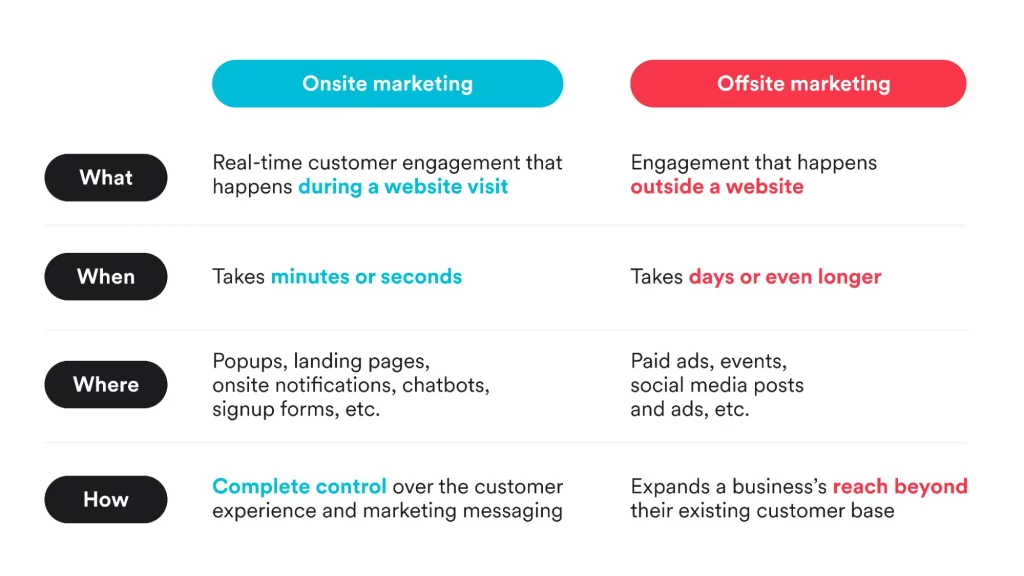
Onsite marketing constitutes an ecommerce marketing strategy designed to engage and convert website visitors through precisely targeted campaigns finely tuned to their behavior and data. This encompasses various factors such as the source of their website discovery (organic or paid traffic), their purchasing history, and the specific pages they navigate or have previously visited.
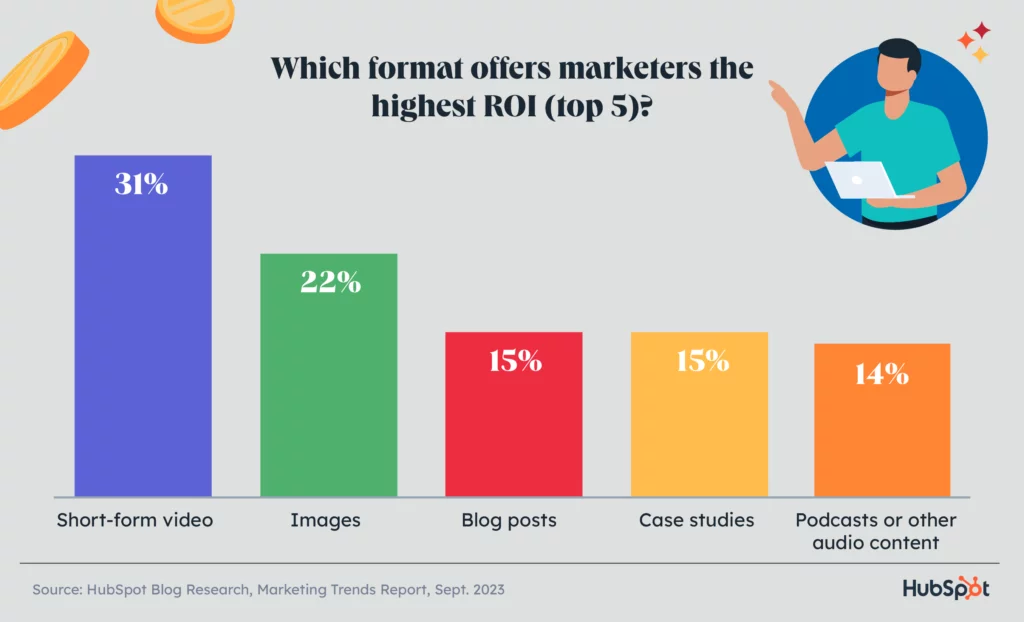
1. Targeted Onsite Promotions
Leveraging targeted promotions for ecommerce stores brings forth numerous advantages. It enhances the shopping experience, making it more engaging and pertinent. Additionally, it facilitates swift and simplified product discovery for customers, ultimately leading to increased sales.
These are specialized marketing messages displayed on websites exclusively to customers who have taken specific actions or fulfilled particular requirements.
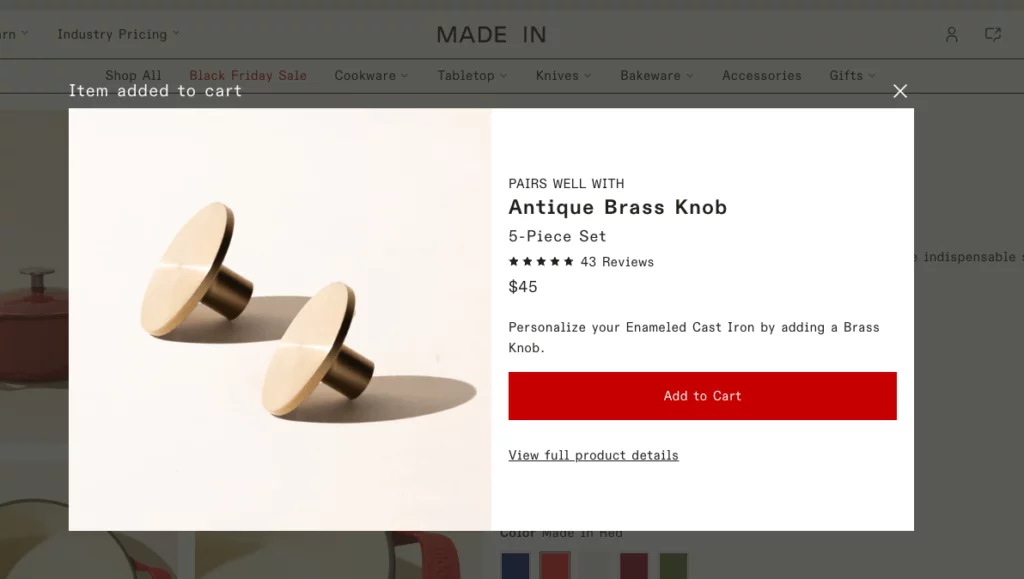
Examples of targeted onsite promos:
- A message featuring a link to a product previously viewed by a customer but left unpurchased (visible only to that specific customer).
- A promotional message showcases related products after customers add a specific item to their shopping cart.
- A personalized discount code was offered to a customer who visited the store thrice but never added a product to the cart.
This offer can appear when a customer adds a product to the cart (thus increasing the average order value and enhancing product discovery). To create such onsite marketing examples, utilize targeting options in your marketing apps:
- Select visitor groups to target (paid traffic, new/returning customers, customers who purchased X days ago, etc.).
- Develop personalized offers or messages for each group (such as a discount code, free shipping, a gentle reminder of a product, etc.).
The following example highlights that if a customer visited a product but left without making a purchase, a promotion like this can effectively remind them and encourage reconsideration.
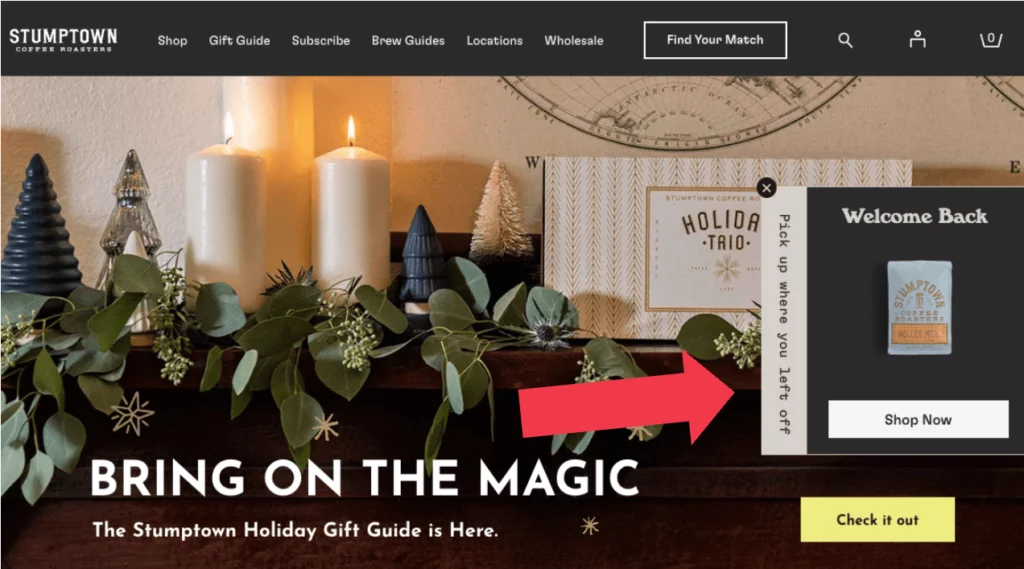
Choose an onsite tool to broadcast your messages (website popups, upsell apps, automated chatbot messages, or website banners).
2. Strategically Positioned Embeds
Embeds, which are signup forms seamlessly integrated throughout your ecommerce site without the need for coding, offers versatile placement options. These forms can include:
- Newsletter signup forms
- Banners featuring time-limited marketing offers
- Spin-to-win contests
- Discount code application forms
Embeds simplify, ensuring that the right customers see your marketing messages at the right time. Additionally, they effectively engage visitors, especially in scenarios where active popups on your website may be distracting or undesirable.
Émoi émoi, an online clothing store, employed a distinctive B2GO (Buy-two-get-one-free) promotion. To avail of the complimentary item (socks), customers were required to select a size and add the promo code to their cart. Simplifying this task, émoi émoi strategically placed embeds solely on the product pages featuring items eligible for the offer.
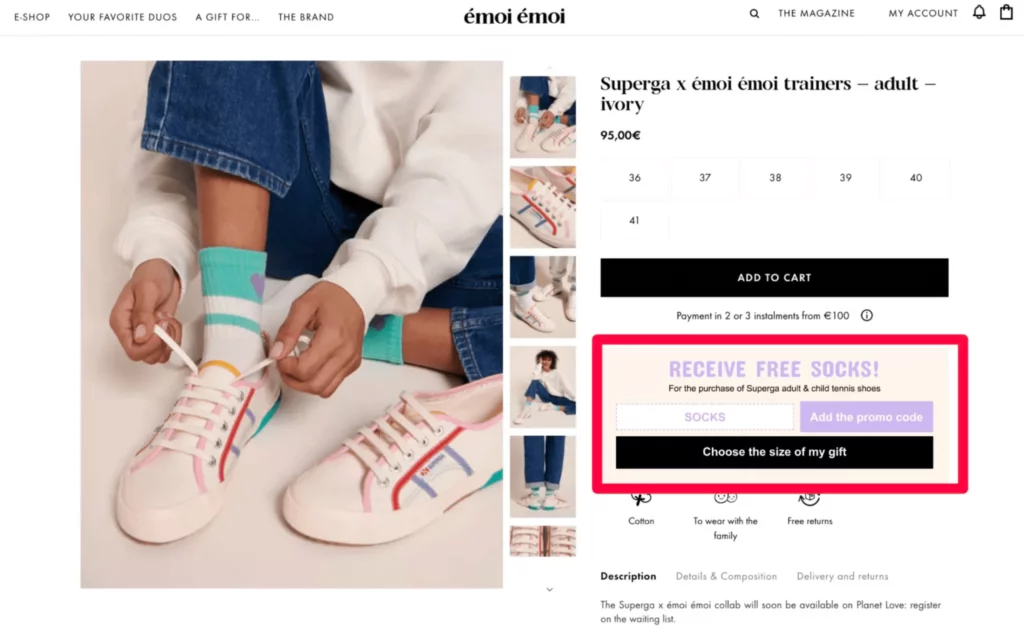
Beyond being a valuable onsite marketing tool, embeds can be customized to appear exclusively for customers meeting specific criteria. For instance, featuring an embed with a promotional offer solely for frequent visitors on pages showcasing a new collection can effectively encourage repeat business.
Learn about the different types of digital marketing here.
3. Onsite Notifications
Onsite notifications, resembling a social media-inspired website feed, come with visitor targeting and marketing features. For instance, Black Ember, an online store specializing in tactical backpacks, effectively directs traffic to pages showcasing new products and exclusive offers.

Onsite notifications present a novel approach to engage visitors on ecommerce websites, offering significant benefits:
- Provide discount codes to visitors.
- Convert visitors into newsletter subscribers.
- Announce new product releases and collections without cluttering the homepage.
- Drive traffic to pages featuring products, sales, collections, loyalty program explainers, your Instagram page, or landing pages.
- Share targeted messages with specific visitor groups (e.g., offering a free shipping promo to those who add a product to the cart).
It is crucial to tailor each onsite notification campaign to maximize engagement and relevance. Utilize customer data and targeting options to create personalized campaigns for distinct visitor groups.
4. Upsell for Subscription Businesses
Imagine a customer is considering a one-time purchase instead of subscribing. While this is acceptable, there’s an opportunity to make a final push by highlighting the benefits of subscribing. Rather than using immediate website banners or popups upon landing, a more seamless approach involves creating a campaign that appears when a visitor adds the one-time option to the cart, similar to Magic Spoon’s strategy.

Creating such a campaign is straightforward. You can display it when a visitor adds a product to the cart or clicks on “Buy” for the one-time purchase option, using what is known as “on-click popups.”
5. Contextual Promotion of Loyalty Programs
Traditionally, loyalty programs are promoted through homepage widgets, dedicated landing pages, and emails. While effective, boosting participation can be achieved by making loyalty program promotions more context-based and personalized, aligning with the principles of onsite marketing.
Examples of such campaigns, presented through banners, popups, or other tools, include:
- Inviting customers to join the loyalty program, specifically targeting those who still need to sign up for the newsletter. This campaign appears only on sales pages to encourage sign-ups for added benefits.
- Offering exclusive deals to customers who have made multiple purchases within a specified timeframe to incentivize continued loyalty.
- Providing a personalized discount visible only to customers who have spent a certain amount in the store, promoting additional bonuses within the loyalty program.
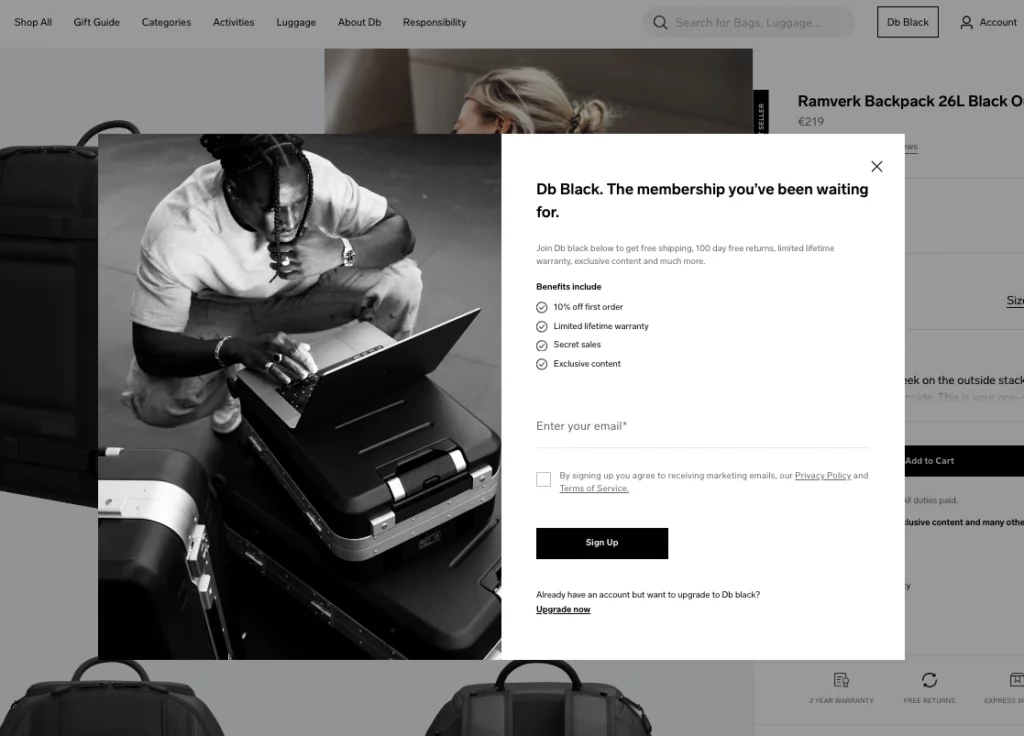
6. Separate Campaigns for Mobile Visitors
Since over 63% of ecommerce orders originate from mobile devices, tailoring campaigns for mobile visitors is essential. Since mobile and desktop channels often exhibit different performance metrics, experimenting with distinct marketing offers for each is worthwhile.
Charlotte Bio, a cosmetics brand, effectively promoted a flash sale using two campaigns—a desktop popup and a mobile-optimized version.
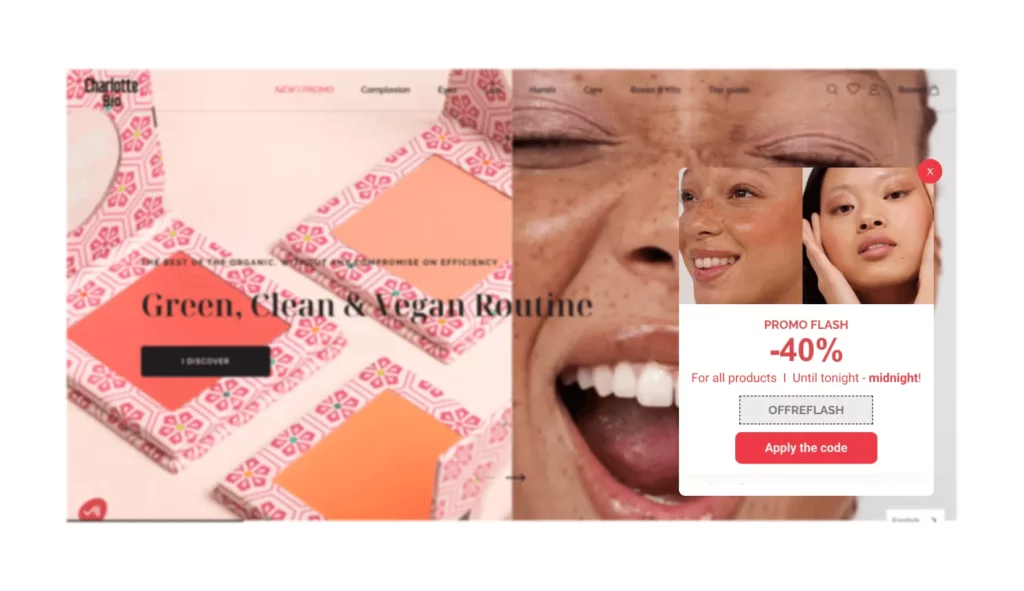
Both campaigns allowed shoppers to apply the discount code with a single click, ensuring equal ease on both platforms through optimization. The mobile campaign outperformed the desktop version, underlining the significance of optimizing offers for smaller screens.
7. Gamified Campaigns: Elevating Engagement and Sales
When implemented strategically, gamified campaigns, such as quizzes and spin-to-win popups, wield significant potential for lead generation and sales enhancement. The effectiveness of these campaigns lies in their proper utilization, specifically during time-limited promotions like flash sales, BOGO offers, or giveaways through popup wheels. Additionally, quizzes become instrumental in delivering personalized product recommendations, enhancing the overall user experience.
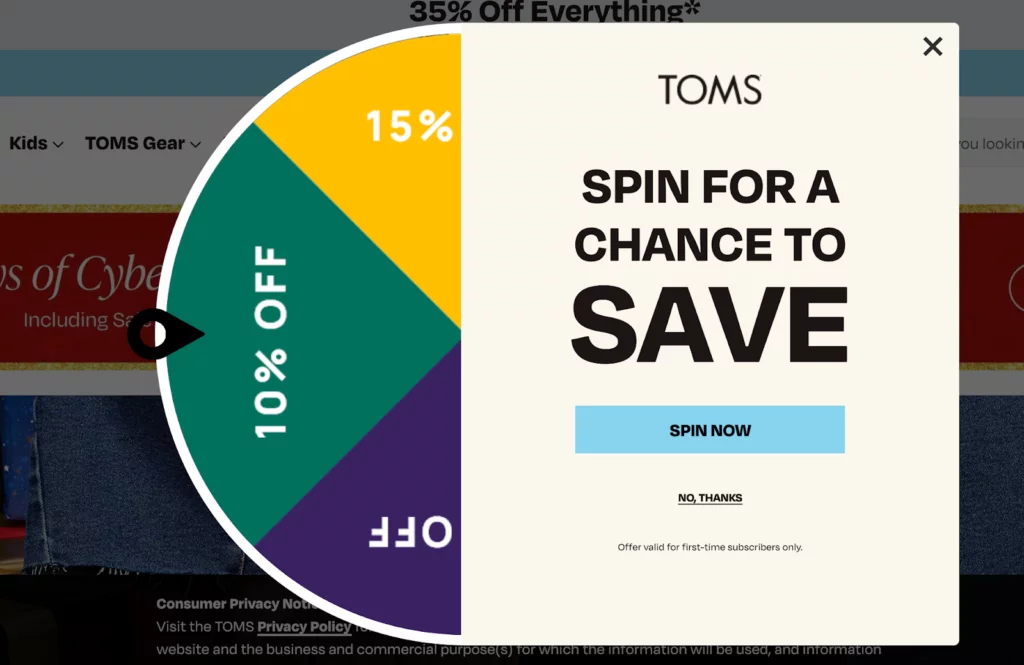
A notable example of this approach is observed in TOMS, where gamification tactics are employed to captivate unregistered visitors during sales events. Utilizing spin-to-win popups, TOMS engages potential customers effectively and customizes the interaction to align with the ongoing campaign.
8. Exclusive Offers for Loyal Customers: Tailoring Rewards for Maximum Impact
While extending exclusive offers to loyal customers isn’t groundbreaking, the key lies in refining the strategy for heightened effectiveness. Instead of generic discounts, these offers can be more targeted and strategic, rendering them more impactful.
For instance, consider providing an additional 10% discount exclusively for repeat customers when they add a product to their cart, serving as a token of appreciation for their continued patronage. This approach not only fosters customer loyalty but also encourages repeat purchases.
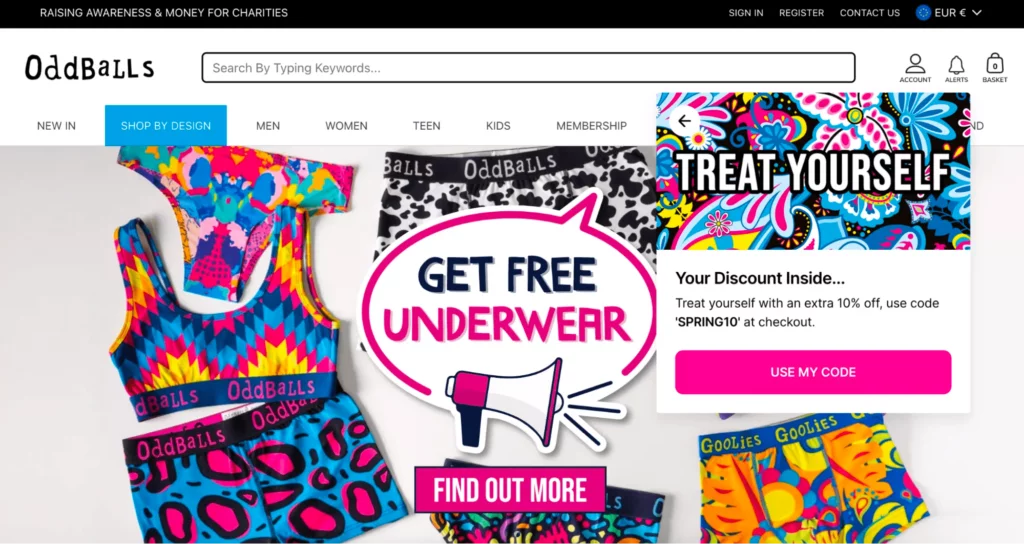
Experimentation with timing adds another layer of sophistication. Introducing private “deal of the day” or “deal of the hour” offers exclusively for repeat customers, promoted through emails and on the website solely for registered visitors, can create a sense of exclusivity and urgency. This tactic requires the seamless integration of targeting options and ecommerce properties within onsite marketing apps.
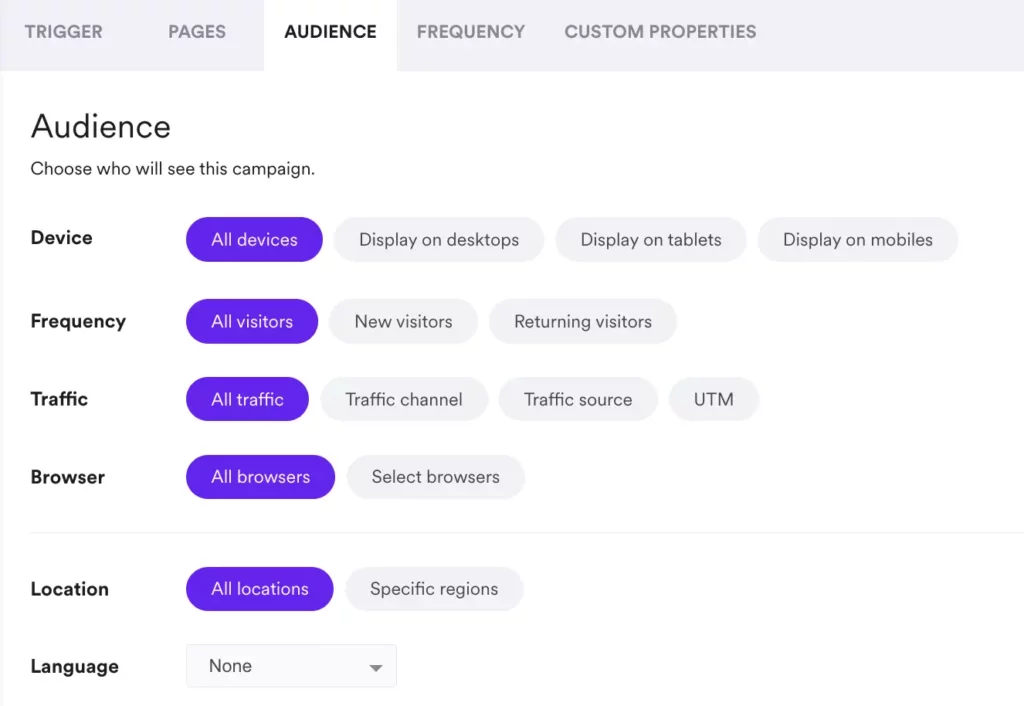
The screenshot in Wisepops, an onsite marketing platform, exemplifies how popup targeting options can be leveraged for precise audience segmentation. Such tools enable businesses to tailor their offers based on customer behavior and preferences, creating a personalized and compelling shopping experience that resonates with their most valuable clientele.
9. Leveraging Multiple Onsite Channels for Unified Objectives
On your website, many onsite marketing channels—live chat widgets, banners, email popups, bars, and more—are available to engage visitors. The power lies in combining two or more channels to achieve a singular goal.
Consider the following examples:
- A popup and a website bar harmonizing efforts for time-limited sale promotions. In this scenario, even if a visitor closes the popup containing a discount code, the offer persists in the bar at the top of the website.
- Integration of an embedded form with a landing page. Placing an embed promoting a loyalty program on the product menu page enables visitors to delve into the rewards associated with shopping, creating an immersive and informative experience.
10. Non-Sign-Up Campaigns for Enhanced Shopping Experiences
“Non-sign-up campaigns” encompass onsite messages geared towards website navigation, directing traffic to specific pages, gathering customer feedback, and other objectives that do not mandate user sign-ups, such as newsletter subscriptions.

The primary aim is to streamline the shopping experience through personalization while garnering valuable feedback. Examples of such onsite marketing campaigns in ecommerce include:
- Exit surveys
- Popups with links to quizzes
- Net Promoter Score (NPS) survey forms
- Suggestion boxes featuring open-ended questions
- Forms dispensing unique discount codes from your Shopify store
- Popups showcasing products related to those in the customer’s shopping cart
- Time-limited deals targeting visitors in a specific product menu section
Conclusion:
Onsite marketing personalizes the shopping journey, tailoring it to each visitor’s preferences. By amalgamating various website tools, such as pop-ups, bars, signup forms, live chat, and more, into a cohesive strategy, onsite marketing distinguishes itself from conventional methods. This approach transforms website interactions, making them more personalized and more effective in converting visitors into customers.
FAQs on Onsite Marketing:
How do targeted onsite promotions work?
Targeted onsite promotions focus on delivering personalized messages to specific visitor groups based on their behavior and preferences. Examples include messages related to viewed products, promotions after adding items to the cart, or personalized discount codes.
What are gamified campaigns, and how are they effective?
Gamified campaigns, such as quizzes and spin-to-win popups, can be effective for lead generation and sales when used correctly. Quizzes offer personalized product recommendations, while spin-to-win popups can share discounts during flash sales or promotions.
How can I offer exclusive deals for loyal customers through onsite marketing?
To offer exclusive deals, you can use targeting options in your onsite marketing apps to create campaigns visible only to repeat customers. This can include personalized discounts, special offers, or loyalty program promotions.
Can I use multiple onsite channels for one purpose?
Yes, combining multiple onsite channels, such as pop-ups, banners, and live chat, can enhance the effectiveness of your campaigns. For example, using a popup and a website bar for time-limited promotions ensures visibility even if a visitor closes one.
What are non-sign-up campaigns, and how do they improve the shopping experience?
Non-sign-up campaigns focus on onsite messages related to website navigation, collecting feedback, and guiding visitors without requiring them to sign up. Examples include exit surveys, popups with quiz links, and time-limited deals to enhance the shopping experience.



